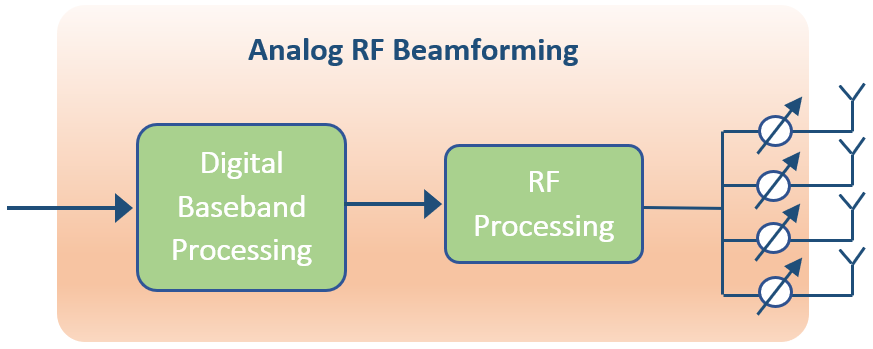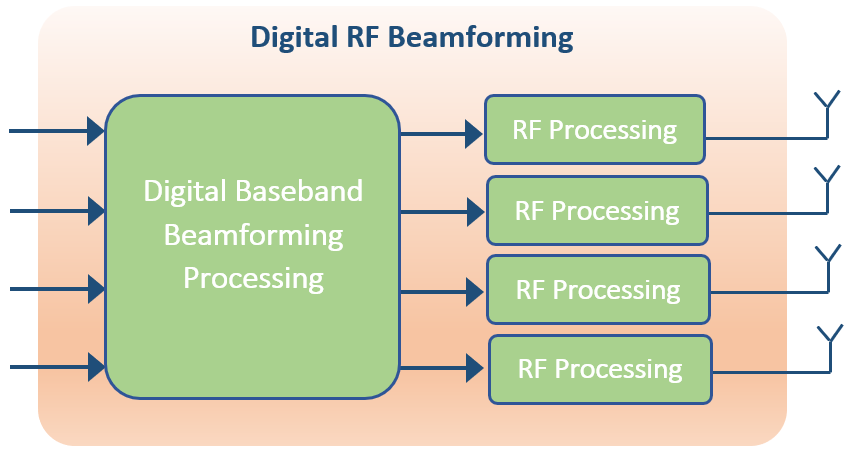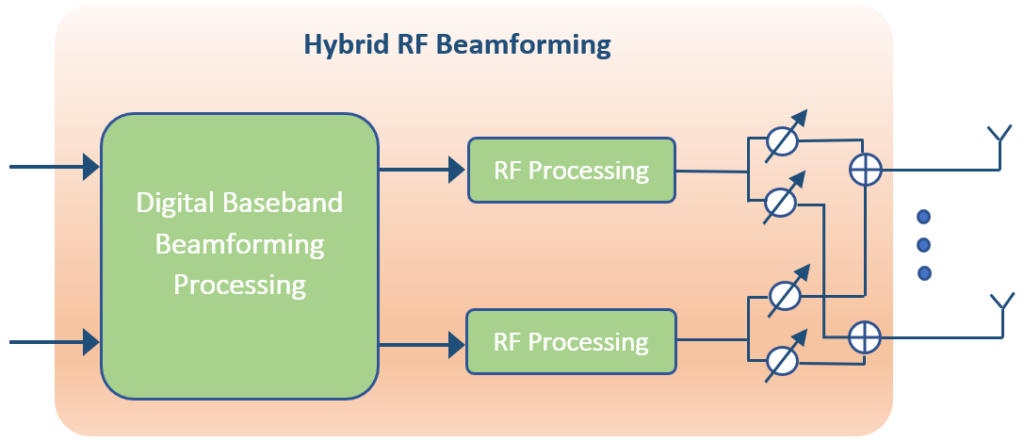Hybrid beamforming is the combination of features in RF communication channels from analog and digital beamforming. Hybrid beamforming solutions are popular among 5G mmWave networks.
In RF communications with an array of RF antennas, the direction of the beam can be steered by applying phase shifters to each element of the array. These phase shifts can be applied with analog circuitry, hence, the name analog beamforming. These analog phase shifters were designed for a specified carrier frequency. Beam squint occurs, if the carrier frequency differs from the specified frequency. Beam squint results in an angle shift of the main beam lobe. For wide bandwidth applications, such as mmWave networks, this is a problem.
Digital beamforming resolves this issue. Now the optimal weights (phase shifts) can be dynamically determined in the baseband domain. This requires each antenna to have a dedicated baseband RF processing channel. This increases the cost and power consumption of the system.
Another advantage of digital beamforming is that it has the ability to drastically increase the channel capacity. If the beams are sufficiently narrow, spatial multiplexing can be used to send out multiple signals in different beam directions. However, this optimization problem is nontrivial and complex.
Hybrid beamforming is a solution to overcome the complexities of digital beamforming. By including analog beamforming, this will constrain the number of RF chain components, and the optimization problem. This constraint does not allow for a hybrid beamforming system to achieve the capacity of fully digital beamformers, but it has been shown that the performance gap is relatively small when channel characteristics are considered.


